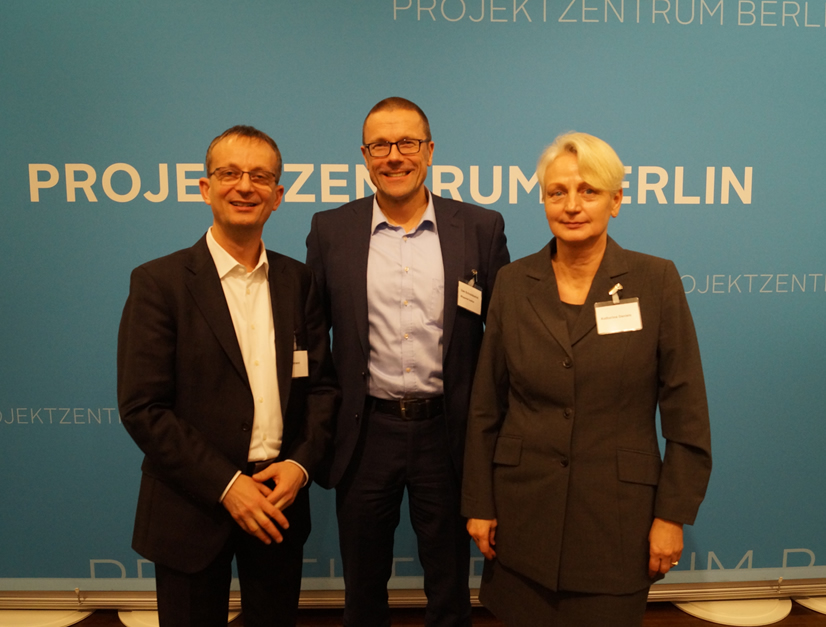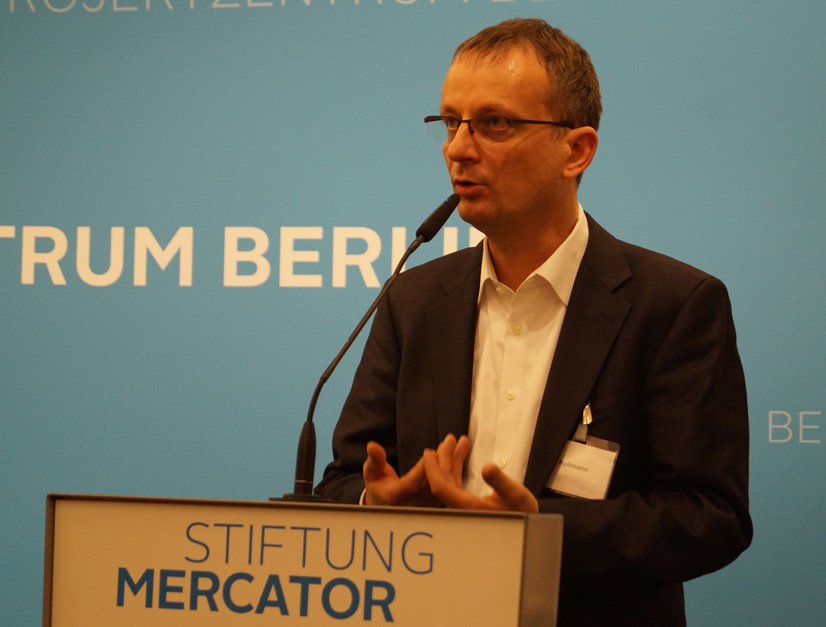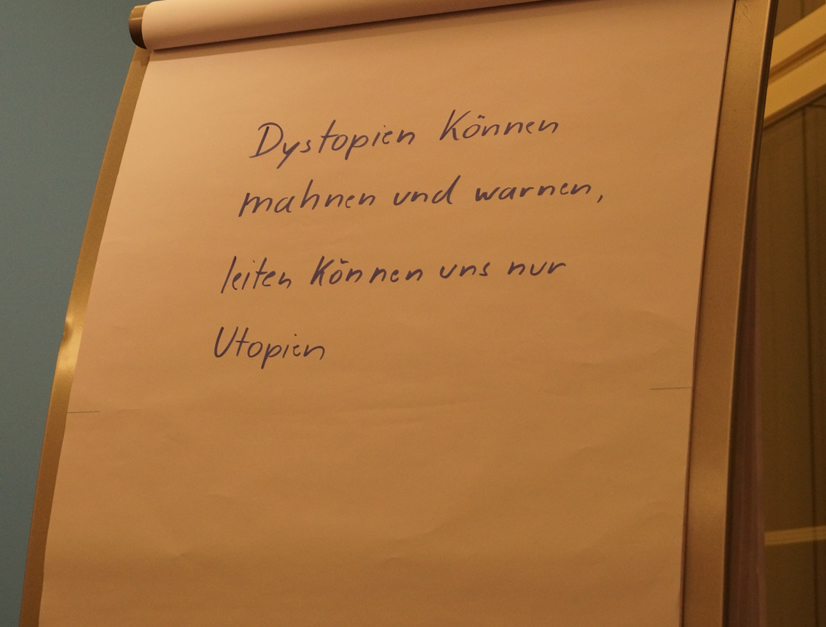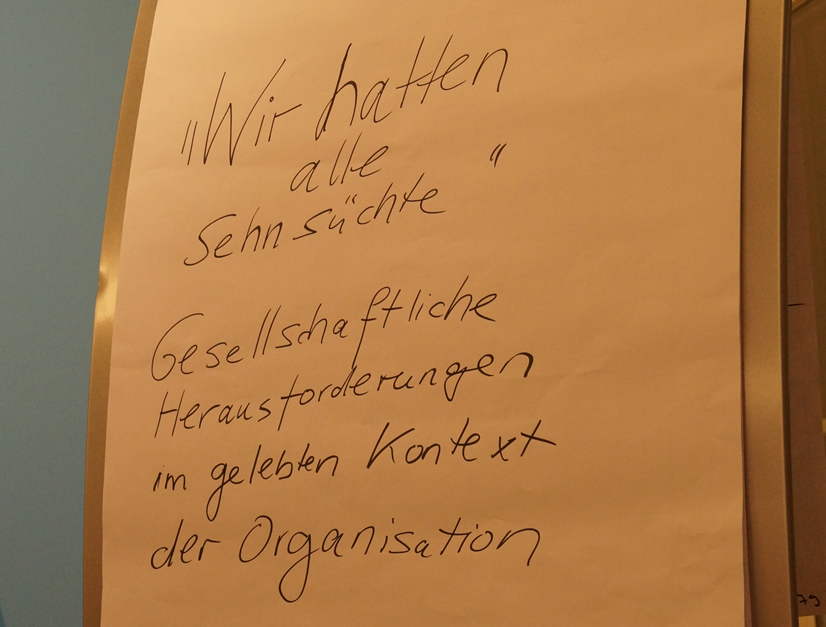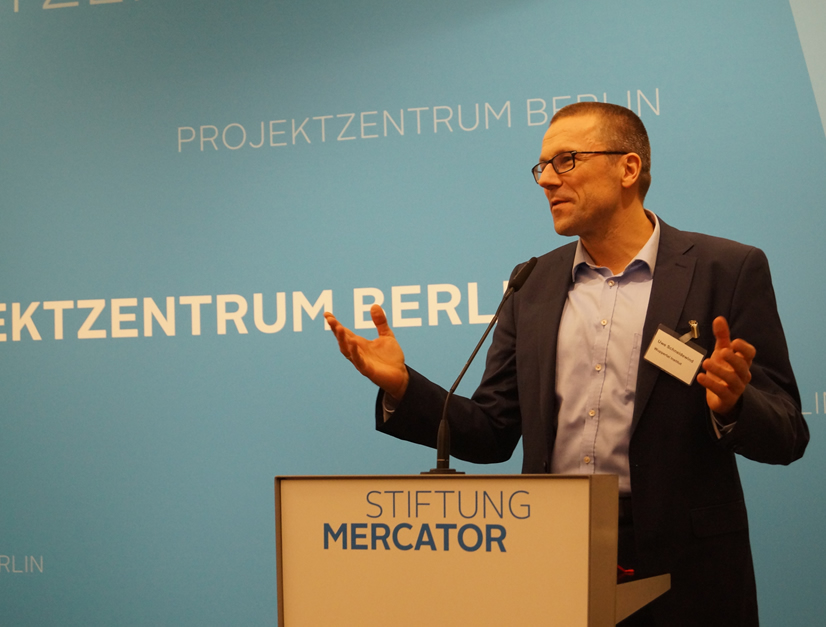20. October 2017
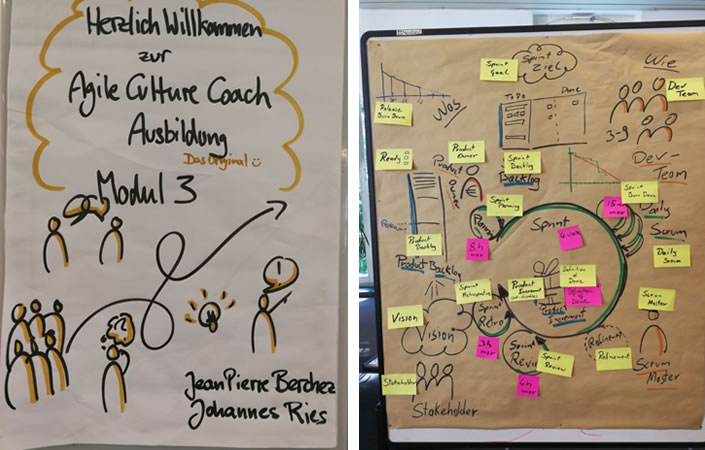
Does »Agility« and »Controlling« fit together? The big Munich »Controller Congress« had the title »Agile Controlling in the digital reality – managing upheavals successfully?«. I received a fantastic offer: Deep immersion into the subject during a professional training to the »Agile Culture Coach«. In contributions to the ICV ControllingBlog, I report about it. Today: Module 3: Agile Methods and Scrum.
The first module 1 of the training, as described here, was focused on »Agile Leadership and Participation«, Module 2 – on the »Agility and Personality« followed in May. Here »The Construct Personality« became the center of interest, and among others we discussed structural and personality tests.
In July Module 3 presented the topic »Agile Methods and Scrum«. Various agile formats, design thinking, strategy tools and conference formats were discussed. We, 14 participants, should learn the logic of agile methods and the most important tools associated with them. Objective: To be able to build Scrum teams in organizations and accompany them.
In the main topic Scrum it was at the beginning about the Scrum framework with roles, artefacts, rules etc., dealing with questions such as emergent architecture and reporting. Scrum teams and the tasks of the Scrum Masters were dealt with in detail. It was also important to pay attention to the fact that another goal of this module was to get the necessary knowledge for a successful examination to the Professional Scrum Master.
For trainers the organizer, SYNNECTA, invited two renowned experts: Jean Pierre Berchez and Johannes Ries. They led us sovereignly and captivatingly through a whole mountain of new knowledge. Berchez (picture) has been familiar with Scrum since 1995. The certified Scrum Trainer and Coach organized a.o. Scrum certification workshops with the inventors of Scrum, Dr. Jeff Sutherland and Ken Schwaber. Johannes Ries helps people in organizations find answers for business planning, strategy and organizational development in the unpredictable VUCA world.
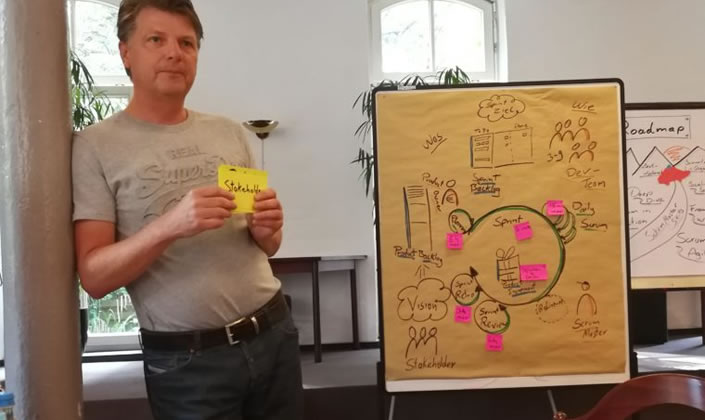
Potentials of teams
Agile teams are VUCA-resilient if they have prepared themselves for any situation by a high degree of diversity and interdisciplinarity. Teams or projects can quickly »swell« and the »task jungle« can quickly become confusing. The team members often work at different locations, possibly even in various time zones. Effective tools for task management are essential.
For »agile project management« the training module focused on Scrum – an agile method for complex development projects. Scrum is effective by combining the ability of the stakeholders to unite their potential. The Scrum concept works for various, clearly defined positions such as product owner, development team, Scrum Master. The Scrum Master, selected from the development team, supports and monitors the entire process for example. The workflows are clearly structured, in a jointly maintained task board and the completed tasks are transparent to the team. We participants learn about different Scrum tools – and try them out on our own fictitious Scrum project. For example, the »Product Backlog«, a list of user stories or requirements maintained by the product owner. There are e.g. the »sprints« – each increment is a time box of as a rule 30 calendar days – and there is the »Sprint Backlog«, a list of tasks that are required to implement the Sprint’s selected product backlog requirements in deliverable product.
Also our training module 3 was divided into (four) sprints. In Sprint 1 we built teams, where we could actively experience Scrum during these two days. In Sprint 2, as a »Scrum Team Member«, we learned to understand the »why« for agile and Scrum, so that we could later use it in our organizations (Why agility? #Cynefin #VUCA #Simulation). In Sprint 3, we learned how to use the Scrum framework effectively (and pass the certificate validation) (#Roles #Practices/Tools #Events #Artefacts #Myths). And in Sprint 4, our teams ran a Scrum practice project where we could experience Scrum in action (#Vision #Product Backlog with User Stories #Prioritizing the Backlog Items #Estimating).
Obvious, but not simple
I understand now the agile procedures and Scrum: by clear prioritizations, e.g. the products that the customer most urgently needs are made available. Deliverable (sub)products are disclosed in e.g. monthly intervals, at the end of each iteration. In the entire product development, the level reached is always transparent at all times. If something goes in the wrong direction or obstacles arise, the entire team can quickly react during the daily checks. This frequent, regular feedback in the daily rhythm ensures continuous improvements, both in the process and in the product.
The basic principles sound plausible, but Scrum is certainly not simple. Trainer and also some students with first Scrum experiences made it clear in exciting discussions that the practical implementation in complex system landscapes and organizations is anything but easy. In practice, there are no homogeneous system environments. And the biggest challenge I see in the necessary changes of the organization for a suitable framework.
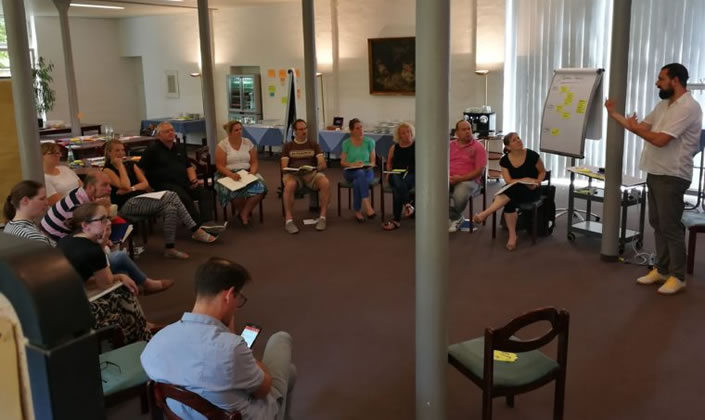
(Reports from other modules of the Agile Culture Coach training will follow.)
Hans-Peter Sander blog.icv-controlling.com
12. September 2017

»Not yet an answer«
Consider a group of people. They are all different, not the same, but they have one thing in common: they work together. They were told that work these days needs agility, and diversity. Everyone nodded in agreement. All of them have the same education, know the rules and the goal. Yet cooperation simply won’t happen. They purchase new methods, from experts. Be different. Faster. More agile. Still, nobody understands what is to be done. Everybody does as they know. Until someone asks a question and listens well. That is new and different. The question asked for a meaning. That was inspiring. They notice that mindsets cannot be purchased. Agility and diversity also cannot be bought. They say, let’s ask some questions and listen well. While that is not really anything new, it has not yet been established everywhere.
Hanna Göhler
Picture: freepik.com
12. September 2017
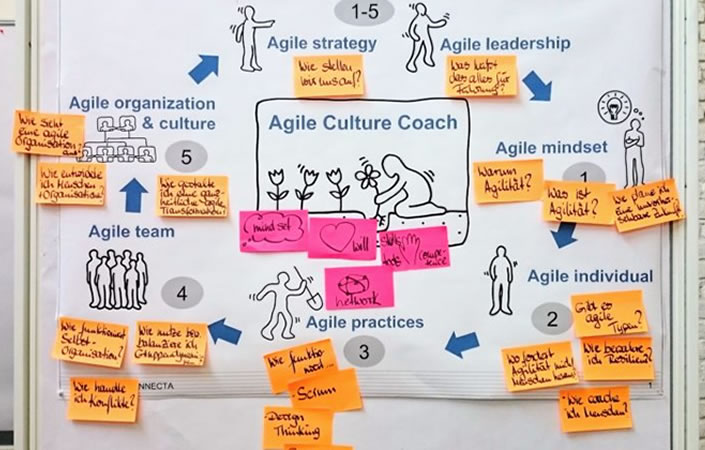
»Agility« and »management control« – that’s a match! Even this year’s large Munich »Controller Congress« agreed when they titled the event »Agile controlling in digital reality: Managing upheavals successfully«, didn’t they? Or is it not a match after all, as some critics raise in discussions time and again? I have a fantastic opportunity: I have been invited to delve deep into the topic with a professional training course to be an »Agile Culture Coach«! These blog contributions will report on my experiences.
This training course takes the form of five modules, which each last several days, over the course of a year: »Agile Leadership and Participation«, »Agility and Personality«, »Agile Methods and Scrum«, »Agile Teams and Conflicts«, »Agile Organization and Culture«. Together with 13 other participants, I am enjoying this training course by and with SYNNECTA, consultants for organizational development and change management in Cologne. It is already the third run of this course: the hosts are visibly proud to be able to name it »the original«.
»Agile Leadership and Participation«
The first three-day-module is titled »Agile Leadership and Participation«. It is a fascinating start which goes far beyond a mere introduction for guidance and terminology. We address »agile strategy« (How to we take position?), »agile leadership« (What does that mean for management?) and »agile mindset« (Why agility? What is agility? How do I plan for an unforeseeable future?)
So, what is »agility«? The views are generally hazy. Our two trainers Renate Standfest and Dr. Johannes Ries are perfectly right to mention that the word »agile« is often even used as an excuse for appointments not kept, responsibilities abused. They make a convincing case, however, that the term has its basis in »valuable thoughts and concepts« that go far beyond »showmanship and bullshit bingo«. It is these notions that give teams, organizations and management a scope for action in the current times, which our trainers describe as a »VUCA situation«.
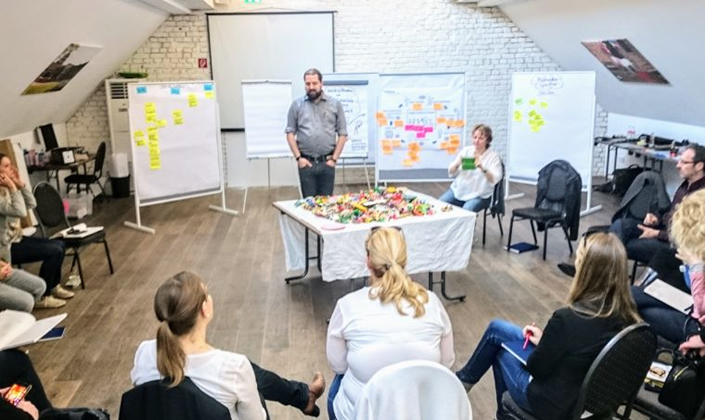
Our »current times«, dominated as they are by digitalization, political upheaval, climate change, etc. are, as is generally known, described as a »VUCA world«. VUCA comprises »volatility« (instability and fast, ground-breaking change), »uncertainty« (even incalculability), »complexity« and »ambiguity« (without simple cause-and-effect relations, ambiguity is on the fore). »Linear methods« no longer apply in this world of VUCA: so what will work?
How are we to understand »agility«? Out course instructors will not provide a »single, 100 per cent« definition. They note the »dimensions of agility« and recommend the »agile manifesto« as a basis. This »Manifesto for Agile Software Development« (it was signed by 17 persons from the field of programming in 2001) points out several key points:
- they consider »individuals and interactions« more important than processes and tools;
- they deem a »functioning product« more important than extensive documentation;
- they explicitly favour »cooperation with the client« over any (contract) negotiations;
- they expressly consider »reacting to change« more important that following a plan.
The SYNNECTA experts derive 12 principles from this manifesto: client satisfaction, openness for change, iterative development, intensive cooperation, focus on a motivating environment, face-to-face communication, functioning products as a measure of progress, steady speed, technical excellence and good design, simplicity, self-organization and self-reflection. »This list is a good summary of the mindset that is necessary for all agile practices and configurations to work«, states Ries.
Effectuation: means guidance, affordable loss and more
The course focuses on agile practices and methods that facilitate the above-named principles. »Scrum«, for example, is a term that comes from software development and by now has entered further fields. This agile method (it will be treated in depth in the third module of the course) is aimed at reducing the »scale of effort« as far as possible.
»Effectuation« is a concept that particularly catches my interest during this first module of my Agile Coach course. Once again, we are addressing hands-on consequences of the changing world, and in particular our world of work. »The dominant theme here is not ›either or‹, it’s ›as well as‹!«, explains SYNNECTA expert Renate Standfest. »With an uncertain future, where the environment can be changed and the aims negotiated, we’re on perfect ground for effectuation.« We are used to problem-solving by way of »linear causal processes«, but now is the time to recognize the circumstances, coincidences and unplanned events as opportunities and deliberately not draw a line. We are presented with a stimulating list of four principles of effectuation:
- Principle of means guidance: instead of choosing or creating the means and ways to achieve a previously defined goal, this means finding goals and results that are achievable within a given set of means.
- Principle of affordable loss: guide your investment at hand of the affordable loss, not the expected result.
- Principle of circumstances and coincidences: circumstances, coincidences and the unexpected should be used as an opportunity rather than being shut out.
- Principle of agreements and partnerships: to be made with those who are ready to take part.
Module I of my Agile Culture Coach training course is filled to the brim with a plethora of highly interesting input. I am convinced that that’s a match for the world of controlling! There is plenty of thought-provoking content on offer in these first three days alone. I had many, many new insights, from dimensions and principles of agility to effectuation, fascinating methods such as landscaping, the Stacey matrix, daily meetup, etc., and even playful elements like the team-building »marshmallow spaghetti contest« as well as the very personal presentations by the individual course participants at hand of Lego and Duplo bricks.

Hans-Peter Sander
blog.icv-controlling.com
3. February 2017
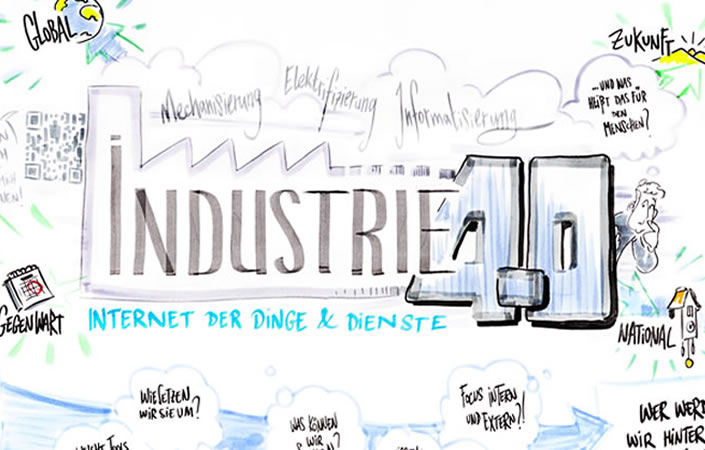
It is currently the main economic issue, and there is hardly any topic whereby the impact on industry and society is discussed so controversially. When it comes to the question of how digitalisation changes the working world, different opinions determine the public debate. Pessimists fear the destruction of jobs, while optimists see Industry 4.0 as an engine of growth and employment. In whichever direction it goes, one thing is certain: the pressure to change that is placed upon employees, employers and the state will increase significantly.
After the mechanisation, electrification and computerisation of the industry, the arrival of the Internet of Things and Services into the factory rings in a 4th industrial revolution. In the future, companies will network their machines, storage systems and operating equipment as Cyber-Physical Systems (CPS) worldwide. As a result, industrial processes in production, engineering and the supply chain can be improved fundamentally. In newly emerging Smart Factories, a completely new production logic is prevailing. The embedded production systems are networked with business processes within factories and companies and connected to value-added networks – from the order to the output logistics. At the same time, they enable and require a full view across the entire value chain.
Industry 4.0 creates new forms of value creation and novel business models. The opportunity to develop and offer downstream services is made available, especially for start-ups and small companies.
For companies, the Industry 4.0 work group sees, among other things, the need for action in the following fields:
- Mastering complex systems: Products and production systems are becoming increasingly complex. Adequate planning and explanatory models are a basis for mastering the increasing complexity. Engineers have to be given methods and tools to create such models.
- Safety: Operational and supply chain safety are critical factors in intelligent production systems. On the one hand, production plants and products should not pose a threat to people and the environment; On the other, the equipment and products themselves have to be protected against misuse and unauthorised access – particularly the data and information that are contained within them. For this purpose, among other things, integrated security architectures and clear identity verification have to be implemented and professional and further training contents have to be supplemented.
- Work organisation and design: The role of employees is changing dramatically in Smart Factories. The increasing real-time-oriented control changes the content, processes and environments of the work which is to be performed. This provides opportunities for greater self-responsibility and self-development among employees, which can be achieved through a socio-technical design approach. To this end, a participatory work design as well as life-accompanying qualification measures should be taken into consideration, and reference projects with an exemplary character should be initiated.
- Training and further education: Employees’ tasks and competency profiles will change significantly in Industry 4.0. This requires adequate qualification strategies and a learning-oriented work organisation that enables lifelong learning and workplace-oriented further training. For this purpose, model projects and »networks of good practice« should be promoted, for example, and digital learning techniques should be explored.
This means that companies have to change more quickly than before, to respond more quickly to impulses, and to deal competently with the increased complexity. The executives and the HR departments in companies are required to adapt the development of their staff more quickly and more strongly than before to new and changed requirements, as well as to establish work organisations that offer considerably more freedom than was the case before. Set shifts and firm department boundaries will also be put to the test, as will rigid job descriptions. Decisions will increasingly have to be made where the decisive situation arises. To accomplish this, a trust culture and the development of decision-making capacities are an absolute prerequisite. Industry 4.0 leads to more self-determined, self-responsible and, therefore, more highly motivated employees. To achieve this, new and innovative ideas and opportunities for further education, for school and university training, as well as for the dual training system and organisational development are necessary.
Wilhelm Dick








